Interview: Rumble Co-Founder Noah Neiman on the Company’s New Training Studio
Through design and branding, the team is has created a transformative fitness experience

Three years ago, Rumble opened its first location in NYC and has since expanded nationwide with 10+ locations of their boxing-themed, full-body group fitness studios. This week, across the street from their original location in Chelsea, they opened the doors to a new endeavor: Rumble Training. Trading boxing bags for custom Technogym treadmills and thoughtfully designed station boxes, it would be easy to assume it’s another iteration of Barry’s Bootcamp, but it’s quite a leap from the originator of the mixed-modal group fitness experience. Rumble co-founder Noah Neiman got his start as a trainer at Barry’s 10 years ago, but today brings his infectious energy, passion for brand development and thoughtfulness surrounding the fitness journey to the rapidly growing space. And he’s increasingly being tapped to help non-fitness, real-estate-driven brands define and execute their brands.
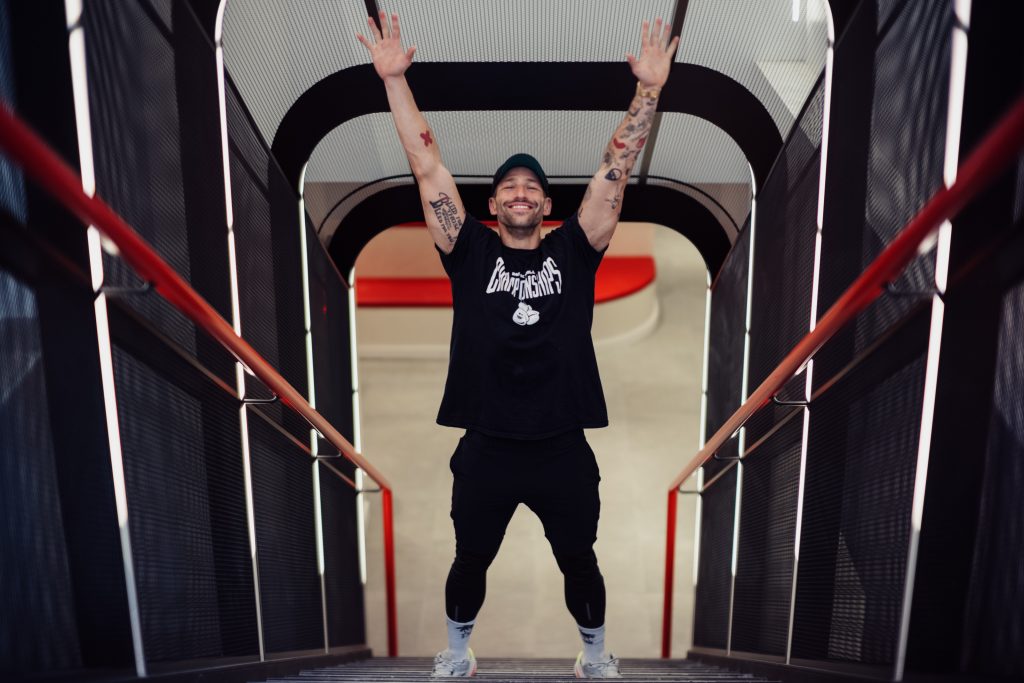
Offering something unique in this crowded industry proves challenging, but it’s a challenge that Neiman doesn’t shy away from. With giants like Equinox, Soul Cycle and even Flywheel or Orange Theory jockeying for the top spot, entering the ranks with a fresh brand requires precise voice, enthusiasm, and an emphasis on quality classes and design. After all, the concept of working out has transformed from a way to stay physically fit into a crucial element of overall wellness. We took a Rumble Training class with Neiman and later, discussed the experience and his approach.
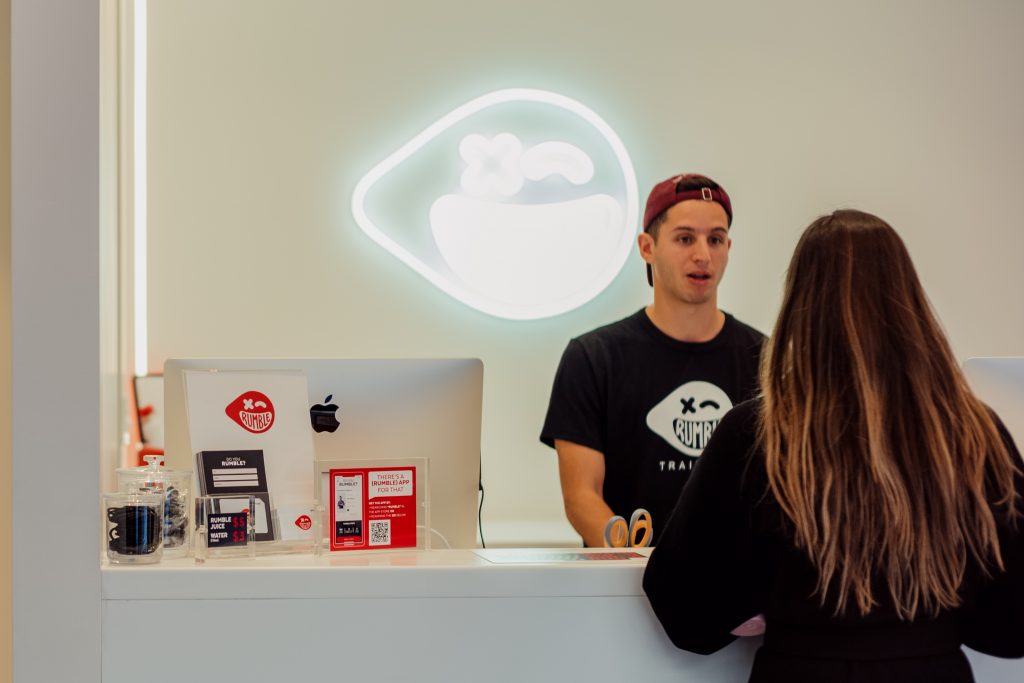
Talk to me about the design experience from check-in to workout. At first it’s pretty familiar, but there’s something important and transformative to how you arrive on the first floor, go downstairs to change, and then come back up, on the other side, to the workout room. Can you expand upon this space’s design?
You understand that as someone who is in the design world, whereas a consumer, they understand it with their soul—with their gut. They might not know specifically the ebb and the flow of the experience. So, every touchpoint to the consumer—whether it’s the subject heading in an email we send you or something else—is highly curated, highly thought about to make you feel a certain way. When you check in, you walk in and it’s sterile, it’s white, it feels like you’re in the Matrix—like you’re about to plug in. The staff is trained in, literally, Four Seasons hospitality. Then, you’re walking downstairs, and it’s almost like you’re walking into a locker room. You’re focused and you walk out and you have those bleachers to congregate.
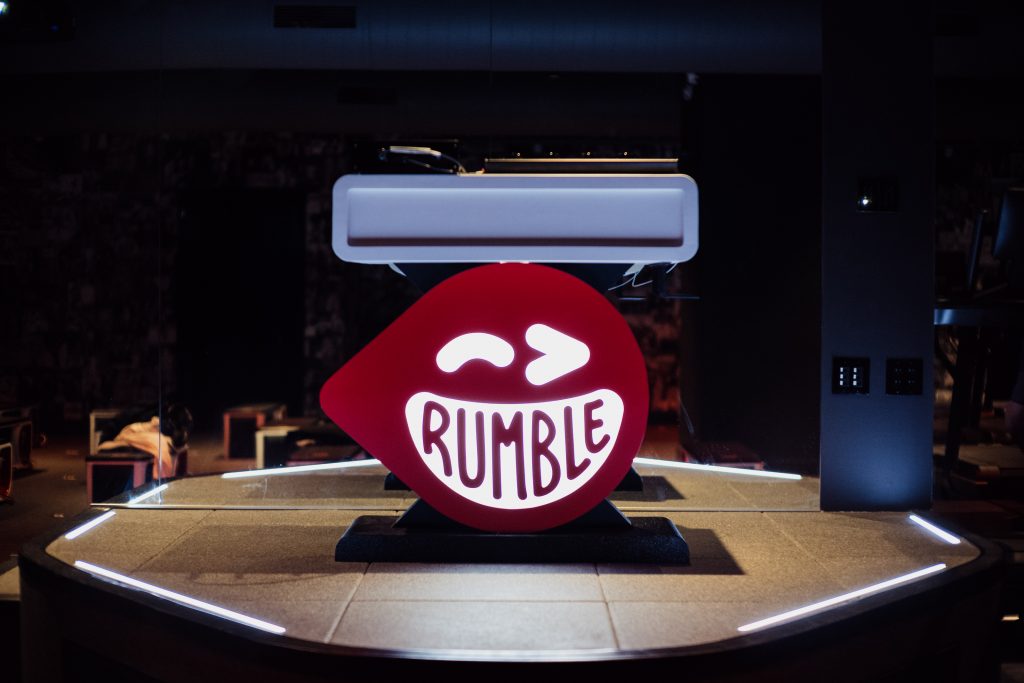
We built that to house people and make them sit down. There, they’re in the locker room and psyched up and having fun. You don’t even feel like you’re in a locker room—there’s music playing and art on the walls. You feel like you stumbled into a SoHo art loft and you’re waiting for an exhibit. Consumers just say, “Wow, awesome.” And then you walk upstairs again. You’re walking up to Mount Olympus where glory happens. You walk in the door and a trainer greets you. That’s part of the experience. There are not a lot of places where the trainer is face-to-face with you. But it was important, from the moment Rumble opened, for the consumer to be thought of and for us to be thoughtful.

Let’s talk about light. One of the first things I appreciated about Rumble Boxing was that it’s dark. I love people-watching, but the more people I can see, the more people I’m going to watch, and having it dark makes it easier focus on what I’m there to do for myself. Is that the intent?
Of course. We want to be inclusive; we want to make everyone feel good. There are physical responses to light signals, obviously. [In the dark] you’re feeding off the communal energy without even looking at it. You’re able to focus on yourself and be present, which I think is really cool about our low light situation. It helps drive the experience. What those low lights do is takes you to here and to now. And I think that’s where a lot of happiness is, just in the right now: to think, “I’m breathing harder. I have the ability to to jog, run, walk. I have the ability to pick up some weights and do lunges.” That’s incredible. The body is an incredible thing. Adaptation is an incredible thing. We want to create and environment that was conducive to that drive, and to that push.

Oftentimes in brightly lit gyms you’re looking around, you’re nervous to really exert yourself because you don’t want to be too loud or start to hard. But in here, lights are low, the music is high and you can be whoever the fuck you want to be. You want to be quiet? Be that person, but not saying you have to. You have the ability to really just be whoever you want to be in there.

You went as far as to actually brand your speakers. Talk to me a little bit about your philosophy on brand and brand development, coming up with the name, and how it plays through in the design of everything.
My partner Eugene says everything is on brand or everything is off brand. That’s like our trademark. It’s what I always talk about in design meetings—in all of our meetings. If it’s off, it’s a scatter plot, which causes a lot of confusion for the consumer.
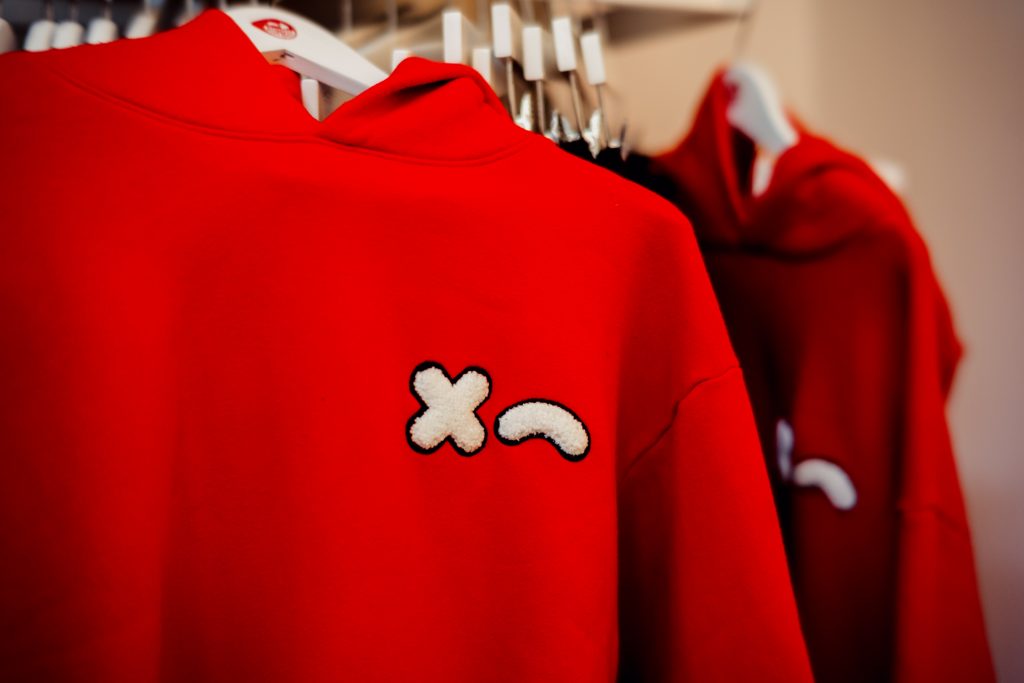
I remember we were presented with a lot of different brand ideas. And I look around and, we’re all looking at each other, and instantly we simultaneously agree. Just from a look, we knew this is it. And we ran with it. We got the logo and it really helped curate everything. We custom-built boxes, speakers. Everything has to have our branding. If one thing is off brand, your consumers may not know it, but they’ll feel it. And if I can, I want to make somebody know or feel who we are as a brand, through both the culture that we create and who we train and hire.
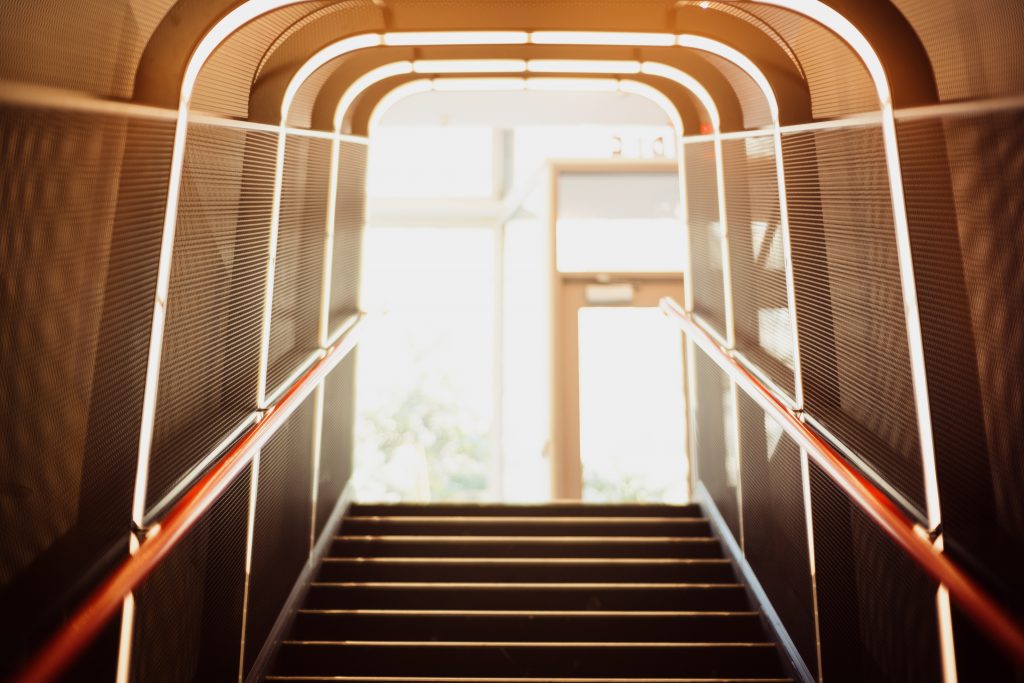
Going back to the flow of coming into the space, and how that flow influences the psychology of getting ready to exercise, is the down and up movement something you’re going to replicate in other spaces?
We always have to work with spatial limitations, so we can’t always do that [this current set up]. For example, in the Chelsea boxing location, we go down, which is another visceral response—you think you’re going to the dungeon, you’re going to work out in the dark, out of the limelight, the spotlight, and you walk back up after.
It’s local globalization. You want to have a brand standard—whether you’re in LA, San Francisco, Philly, or Chicago—you know you’re in a Rumble. You know you’re in an Apple store no matter if it’s here or London. Sure, every store has different geographies, they’re a little bit different, and we really custom curate things based on artwork.
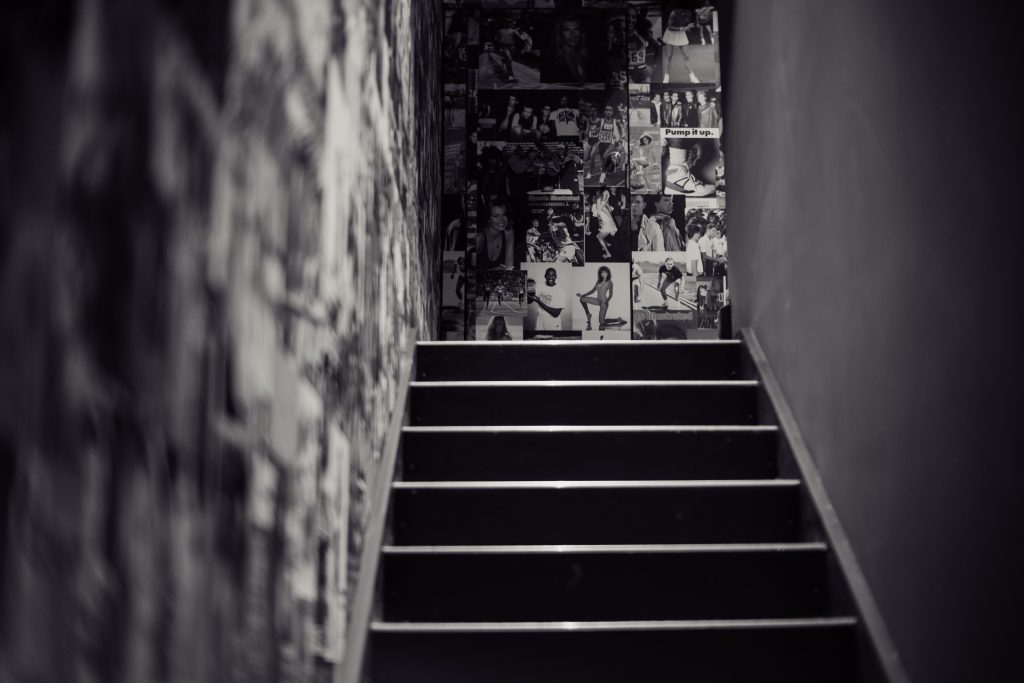
In the Bay, you might see more West Coast influences in our music and our art. But, when you walk in there are brand standards so you understand that, and you have a brand experience people are used to. In terms of the down and up, we work with what we have in terms of real estate, but we did think about it. There’s an energy exchange, and it sets a precedent. It sets a precedent for the energy you’re about to receive, and the energy you’re about to exude. It’s the old mentality of, “If you want to go fast, go alone. If you want to go far, go together.” I’m trying to go far. We’re trying to be forever—not just a fad that fizzles because we were a cool brand that came on the scene and “disrupted” things. We’re founded in creating great, authentic experiences, and that’s what we do.
Images by Josh Rubin












